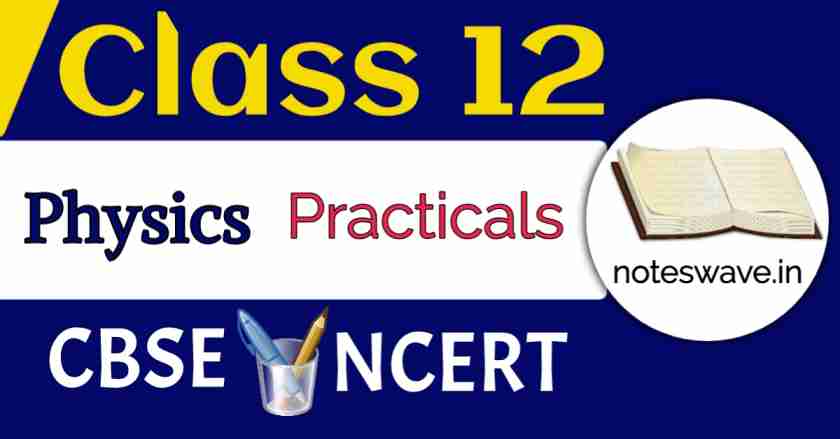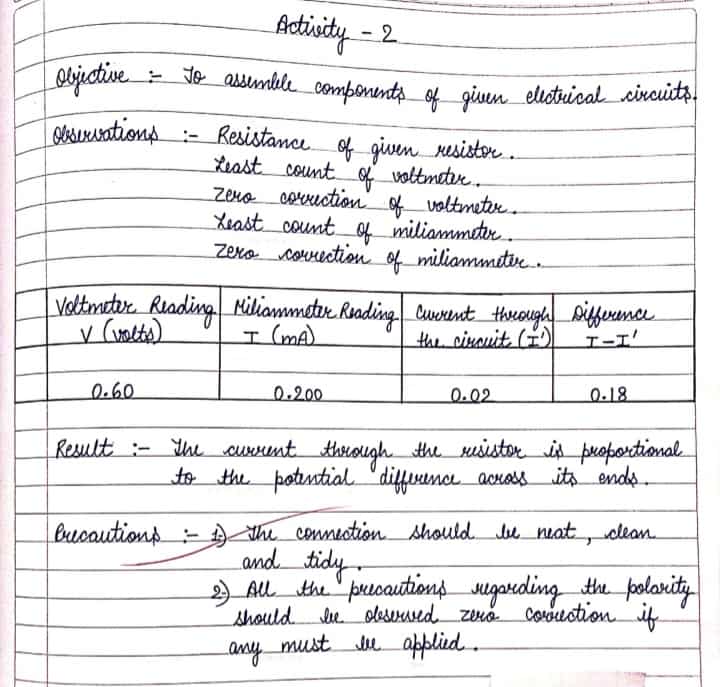
The CBSE Class 12 Physics is an essential guide for students, providing detailed practical notes and readings. It covers a range of experiments, helping students grasp complex concepts through hands-on learning. This manual bridges theoretical knowledge and practical application, enhancing understanding and scientific skills. Below are the physics practical notes and readings for all CBSE Class 12 Physics Experiments and this will be very helpful in your practical examination.
Section-A Experiments
| Section- A |
|---|
| 1.To determine resistivity of two / three wires by plotting a graph for potential difference versus current. |
| 2. To find resistance of a given wire / standard resistor using metre bridge. |
| 3. To verify the laws of combination (series) of resistances by using a meter bridge. or To verify the laws of combination (parallel) of resistances using a metre bridge. |
| 4.To determine resistance of a galvanometer by half-deflection method and to find its figure of merit. |
| 5. To convert the given galvanometer (of known resistance and figure of merit) into a voltmeter of desired range and to verify the same. (coming soon) OR To convert the given galvanometer (of known resistance and figure of merit) into an ammeter of desired range and to verify the same. (coming soon) |
| 6. To find the frequency of AC mains with a sonometer. (coming soon) |
Section-B Experiments
Section-A Activities
1.To assemble a household circuit comprising three bulbs, three (on/off) switches, a fuse and a power source.
2.To assemble the components of a given electrical circuit.

3.To study the variation in potential drop with length of a wire for a steady current.
Section-B Activities
4.To identify a diode, an LED, a resistor and a capacitor from a mixed collection of such items.
5.To observe diffraction of light due to a thin slit.
6. To obtain a lens combination with the specified focal length by using two lenses from the given set of lenses.
Investigatory Projects
Suggested Investigatory Projects
| CBSE Class 12 Physics Investigatory Projects File Notes |
|---|
| 5. To investigate the dependence of the angle of deviation on the angle of incidence using a hollow prism filled one by one, with different transparent fluids. (coming soon) |
| 1. To study various factors on which the internal resistance/EMF of a cell depends. (coming soon) |
| 3. To find the refractive indices of (a) water and (b) oil (transparent) using a plane mirror, an equiconvex lens (made from a glass of known refractive index) and an adjustable object needle. (coming soon) |
| 4. To investigate the relation between the ratio of (i) output and input voltage and (ii) number of turns in the secondary coil and primary coil of a self-designed transformer. |
| 5. To investigate the dependence of the angle of deviation on the angle of incidence using a hollow prism filled one by one, with different transparent fluids.(coming soon) |
| 6. To estimate the charge induced on each one of the two identical Styrofoam (or pith) balls suspended in a vertical plane by making use of Coulomb’s law. |
| 7. To study the factor on which the self-inductance of a coil depends by observing the effect of this coil when put in series with a resistor/(bulb) in a circuit fed up by an A.C. source of adjustable frequency. |
| 8. To study the earth’s magnetic field using a compass needle-bar magnet by plotting magnetic field lines and tangent galvanometer. (coming soon) |
